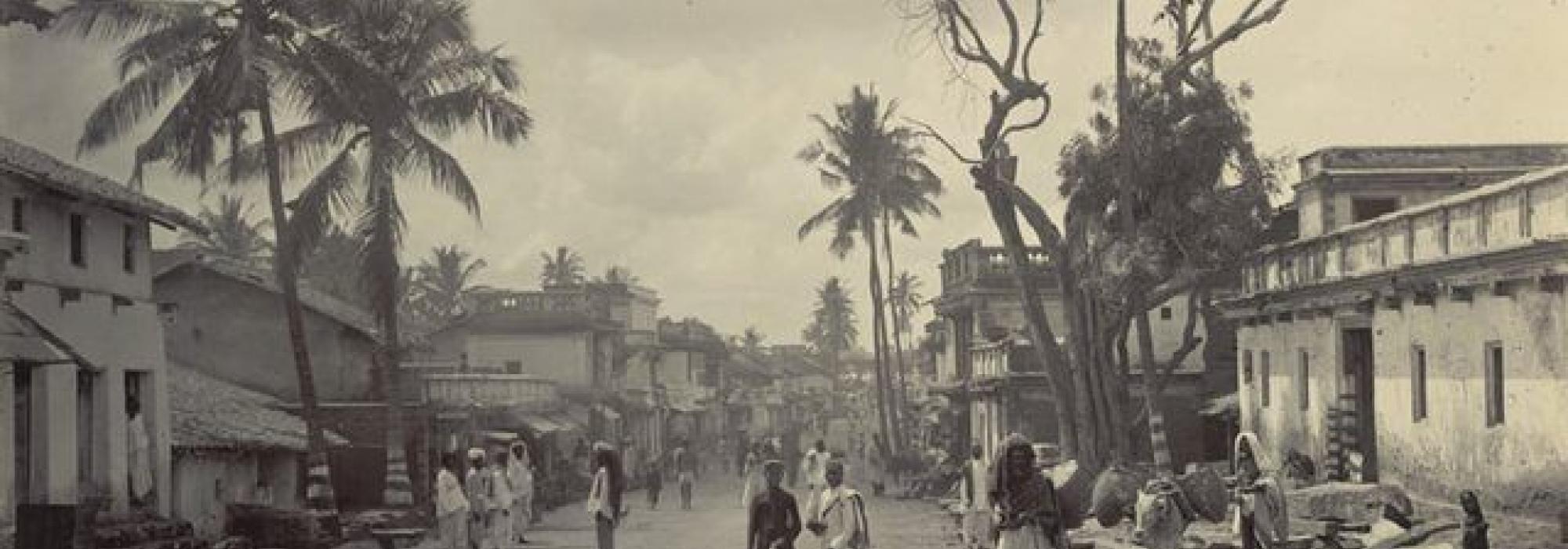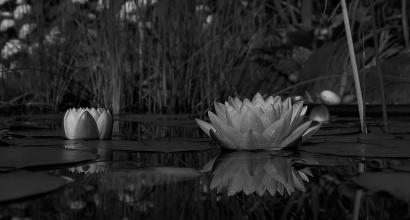A distant relative of mine, who was quite well-to-do and had heard about my academic prowess agreed to provide me with some financial assistance. He, in fact, had seen a potential groom in me. This (his assistance) went on for five to six months. I joined the Fourth Form at the High School in the Maharaja college in Mysuru.
Back then, among the teachers who taught in a manner that captured my heart were Bapu Subbaraya and B. Dasappa. Bapu Subbaraya had worked for Kannada literature. Belavadi Dasappa was extraordinary in his elucidation of English literature; he had authored texts in Kannada as well. I have heard from a different source that he was the warden of the college hostel and that, upon the recommendation of Ramadasappa, he had shown quite a lot of interest in my activities. I was to visit Dasappa’s house every Sunday to render the lessons he had taught. He taught us English at school. There were also instances where he provided explanations in Kannada during his lessons. He had great admiration for sports such as billiards, hockey and golf. He harboured an even greater curiosity for horse-riding.
Joy in Scholarship
Back then, he seemed to have had some interest in philosophy that was hidden within him. Ten to fifteen years down the lane, his interest in vedānta took a more concrete form. He had appraoched the Jagadguru of Sringeri to seek his guidance. His devotion in the Guru matured. He learnt lines from the Upaniṣads and from the commentaries on the (brahma)sūtras by-heart. He often quoted examples from them whenever an appropriate context arose. Also, the Ātmavilāsa, a work by Sadāśiva Brahmendra was on the tip of his tongue. He had taught the poem to his daughters too. As Dasappa sat at leisure in the evenings, his daughters sang the poems adhering to śruti (pitch) provided by a veena. This would please Dasappa and would make him sway his head.
He also made his daughters recite stotras from Jagannātha-paṇḍitarāja's Karuṇālaharī and Lakṣmīlaharī. This was one of his other ways of seeking joy in scholarship. Yet another way was his passion for Shakespeare.
During the years that he to stayed close to National High School in the first street of Basavanagudi in Bengaluru, I resided close to his place in Shankarapura. My usual routine consisted of a visit to Dasappa’s house at about two in the every Sunday afternoon. Coffee and snacks were to be savored there. After that, a few phrases from one of Shakespearean plays were to be read. A few other days, episodes from the historical work ‘(The History of the) Decline and Fall of the Roman Empire’ by Edward Gibbon were read. At half past four, Dasappa would sit in a horse coach and go to the great Cha. Vasudevayya’s house in Malleshwaram. Conversations ensued there. Vasudevayya usually narrated interesting instances from the Rāmāyaṇa and Mahābhārata. Dasappa’s heart knew no bounds for the happinness and contentment it would derive from these activities. This routine went on for three to four years.
Authority on Texts
Dasappa had masterd all the works of Shakespeare. The book that he used was from Collins publications. In his copy, he had indicated the subjects in brief on each page and written a summary in the margins. Along with this, he had noted down interesting sentences from Shakespeare's works in another book of Foolscap size. I put in a lot of effort to procure the two books. Nobody knows where they disappeared. If the books were to be found, students would have greatly benefited from them.
Memory Power
Dasappa and Navaratna Ramaraya were close friends. Their memory power never failed to amaze me. Once, Narasimha Murthy and I were heading towards the public library. We had a difference of opinion over an issue related to Carlyle. As our heated debate ensued, Dasappa was seen coming from an adjoining street. Narasimha Murthy informed Dasappa about our dispute. Dasappa unflinchingly gave examples of ten pages from Thomas Carlyle’s “Sartor Resartus” and two to three pages from “Past and Present”. Then, just as an aside, he recited a few poems written by Byron on Napoleon. A bit later, he also spoke about a few funny poems on the state-strategist Balfour that had appeared in the journal Punch. I was amazed. This was the kind of mastery people of that era had on good works of literature.
Dasappa’s final days was, in the words of those who loved him, not a happy time. He was caught up in a few worldly worries but he seemed to be unaffected by them. He took a stroll every day to breathe in fresh air and as a part of physical activity. A servant usually followed him with a canvas chair. He would search for a deserted place. The place was not merely to be deserted, but had to be suitable for meditation. There, sitting alone in the canvas chair for hours on end, he would recite lines from the Upaniṣads. I have seen this with my own eyes.
This happened one morning at about 9-10 AM. B.M. Srikantaiah and I were walking along the Sampangi lake in Bengaluru. Dasappa was, at that time, reciting phrases from Upaniṣad, sitting amidst the branches of a Indan beech (honge) tree.
A number of English poems were dear to Dasappa. Skylark by Shelly was one such work. Dasappa had understood that this was an allegory to the carefree and disenchanted nature of a person. He got Pandit Mandakal Ramashastri to translate the poem into Sanskrit by and had even published the translation.
It gives me great pleasure to recall these special qualities of Dasappa.
K Varadacharyara
The most important of benefits that I accrued due to my student life in Mysuru was the contact of Kanakanahalli Varadacharya. Varadacharya was an excellent scholar. He had great proficiency in both Kannada and Sanskrit. His was a deep scholarship. Added to this were his heart of a connoisseur and sense of humour. Another quality was his sharp tongue when angry. Students looked upon him with a mix of fear and love.
Varadacharya’s classes on literature were filled with beauty. His voice was pleasant. Added to his melodious voice were the attractive facial expressions and hand gestures. Not only students from other classes but also the other teachers would stand by the windows (of the classrooms) to enjoy listening to his recitation of poems. Varadacharya had a well cultured and refined taste for music. He had no fear just because something was written by a poet. If he came across a wrong usage, he would say - “here, the poet was absent-minded” or “he stumbled gazing elsewhere”. When he critiqued thus, his tone would turn a bit sarcastic. If a student asked a question, “Do not drag the poet to the streets, my child”, he would quip. We would all have a hearty laugh. Where is the rasa in poetry? Where is the beauty? How do we look for it? – it was Kanakanahalli Varadacharya who taught me appreciation of poetry.
Research
After he retired from his job, he researched on the creation of Śabdānuśāsana. It was a research that would go on for years. Whenever one of his students like A R Krishna Sastri, TS Venkannayya or myself, who were well acquainted with him asked him to deliver lectures or articles, he used to reply with a laugh, “What do I do, my dear? If only this ghost of Bhaṭṭākaḻaṅka would leave me... it has gotten me in its grip. Everything else only after this leaves me.”.
This research work kept growing. It grew out of bounds. Who wants this headache? A dry issue based on grammarians? Such a big price for ordering it! In this way, his own earlier work seemed like a big ghost to him. Krishna Sastri was a strong-willed and a patient man. He went to Varadacharya over and over and persuaded him to eventually write a short treatise based on his research. It was published it in Prabuddha Karnataka if my memory serves me right. Let us put aside research and theorization for a moment and just conshider his devotion to the subject. Let us reflect on the single-mindedness, the physical and mental exertion which went on for several years. This is scholarship and penance.
Varadacharya had faith in Ayurveda. He used to provide medication for free. In this way, without bothering about money and effort, Varadacharya was someone who lived and independently toiled only for the welfare of the world and his soul's satisfaction.
|| manasvī kāryārthī na gaṇayati duḥkhaṃ na ca sukham ||
This isthe English translation of the nineteenth essay in D V Gundappa’s magnum-opus Jnapakachitrashaale (Volume 8) – Sankirna Smrutisamputa











































